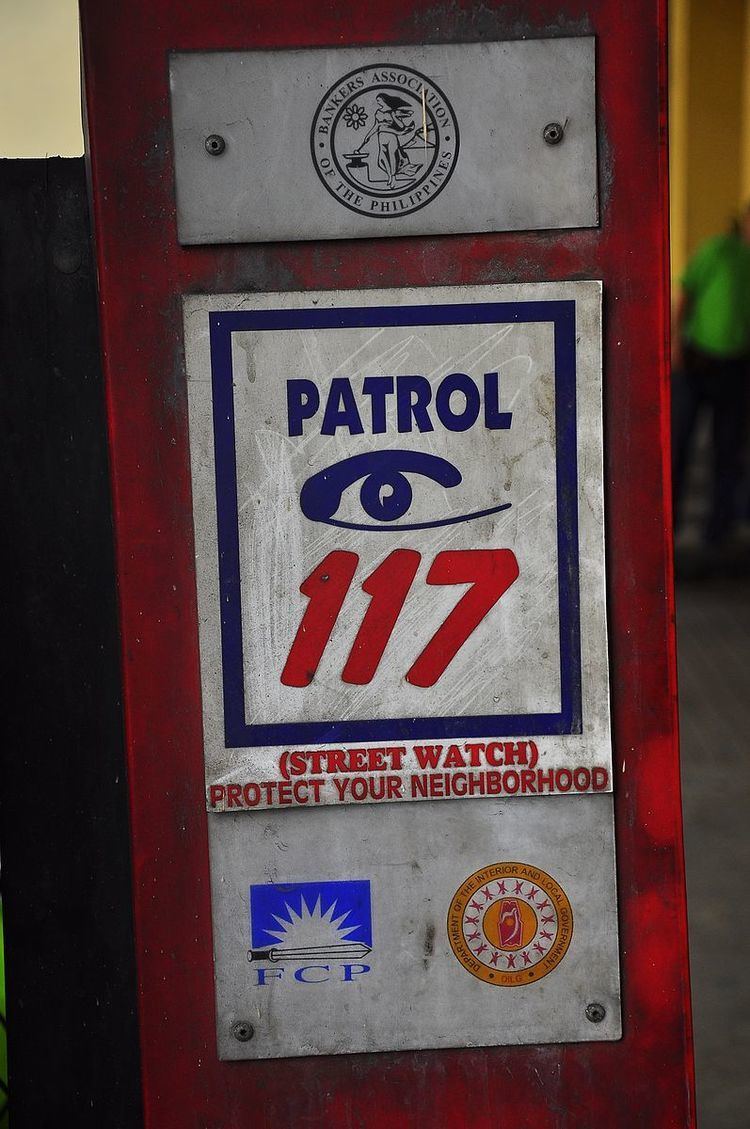 | ||
9-1-1 (pronounced nine-one-one) is the national emergency telephone number for the Philippines. It is managed by the Department of the Interior and Local Government (DILG) and is also referred to by its official name, Emergency Network Philippines (ENP). On August 1, 2016, the new emergency hotline 9-1-1 along with the public complaint hotline 8888 began to implement nationwide, replacing 1-1-7.
Contents
History
Prior to the inception of 117, emergency services were reached through a myriad of telephone numbers. The fire department in Manila, for example, had fifty telephone numbers, one for every fire station in the city. At the time, 117 was solely used in the Metro Manila area by the Philippine National Police for the reporting of ongoing crimes as part of a program called the "Patrol 117 Street Patrol Program" in cooperation with the Foundation for Crime Prevention. Efforts to expand the capabilities of 117 began in the 1990s, starting with the addition of emergency medical services to the scope of 117 in Metro Manila through a private-sector initiative called Project EARnet (Emergency Assistance and Response network).
Government involvement in the expansion of 117's scope began in late 1998, when the DILG announced the formation of Emergency Network Philippines, a project that sought to support a national emergency telephone number in order to enable the faster delivery of emergency services to the Filipino people.
On August 8, 2001, a memorandum of agreement was signed between the DILG and Frequentis, an Austrian company specializing in communications and information solutions in safety-critical environments, on the implementation of the ENP project. The National Economic and Development Authority approved the project later in the year, and project funding was secured with a loan agreement being signed between the Philippine and Austrian governments on December 6.
By virtue of Executive Order No. 226, 117 became the official national emergency telephone number of the Philippines on July 14, 2003.
The P1.4 billion project was completed on August 2, 2003, with the opening of a new 117 call center in Quezon City, serving the entire Metro Manila area. Four more 117 call centers were opened in 2006, and the full 117 network, consisting of sixteen networked call centers, was rolled out in 2007.
In 2016, at his first cabinet meeting after his inauguration, President Rodrigo Duterte vowed to put up a complaint hotline 8888 while Presidential Communications Secretary Martin Andanar said that the existing 117 hotline will be replaced by 911.
On August 1, 2016, 911 has been launched nationwide by the Philippine National Police (PNP).
9-1-1 will be patterned on the same system that was implemented in Davao City by President Rodrigo Duterte while he was still mayor.
Coverage
911 service is available nationwide 24/7. Depending on the location of the call, a 911 call will route to any of the sixteen existing 117 call centers located in various cities around the Philippines. Each call center serves a single region.
Telecommunications Commissioner Gamaliel Cordoba said that all calls to 911 will be rerouted to the existing Patrol 117 hotline while the 911 command center is not yet established.
Existing 117 call centers are located in the following areas:
